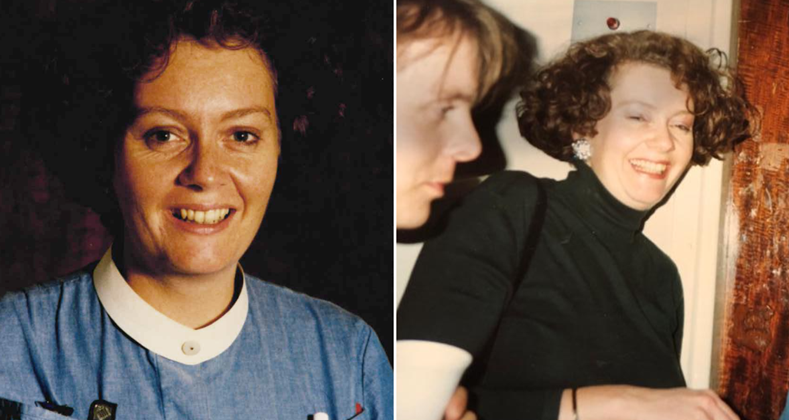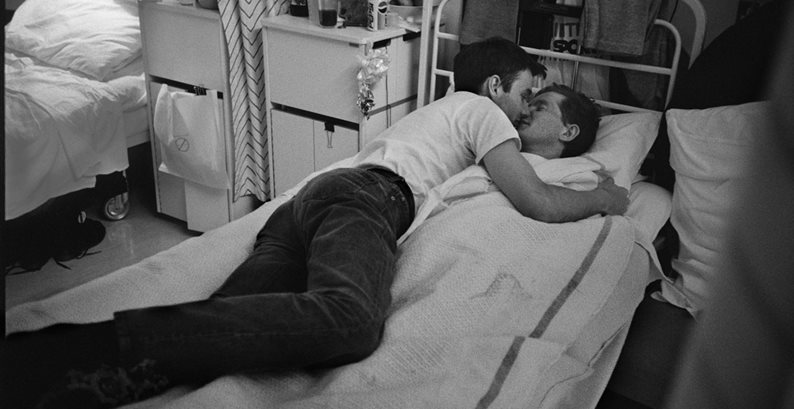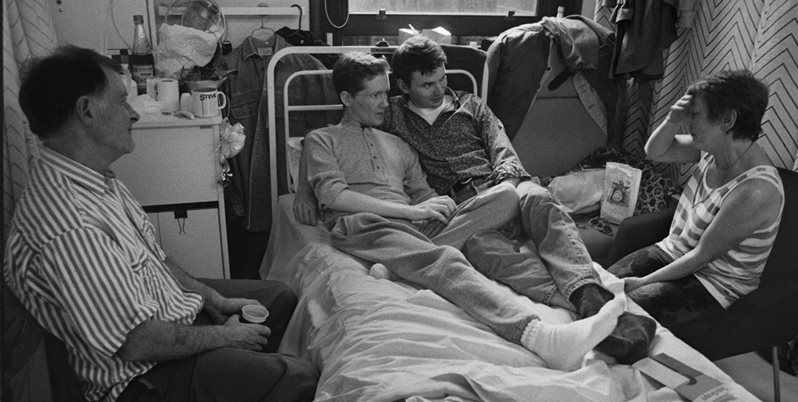As part of our LGBT History Month series, Nicky Perry, Director of Brighton and Sussex Clinical Trials Unit and Honorary Senior Lecturer at BSMS, reflects on the recent Channel 4 series It’s A Sin and how the show brought back so many memories of being an HIV nurse.
I started off watching It’s A Sin the old fashioned way, week by week and discussing it with a friend in between episodes, but we decided we were ‘pulling a plaster off’ very slowly and maybe we should just binge watch it to get it over with. So I watched the final three episodes in one weekend and at the end of episode five (there are five in total). I was sobbing for those characters in the TV programme and for all those people who lost their lives to HIV/AIDS that I had known.
I started my career in HIV as a nurse in June 1988. I was doing agency nursing, having returned from a year away. The agency called me one evening asking if I could do an early shift the next day as they were having trouble finding someone willing to work on the AIDS ward. It was at the old St Stephen’s Hospital (now the Chelsea and Westminster). I said yes and didn’t really think about it for long. I had heard of AIDS and I knew people were dying. During the year before I went away, I was a cancer nurse and was therefore used to caring for people at the end of their lives… how different could this be?

Left: Nicky Perry began her career in HIV as a nurse in June 1988. Right: Nicky with friends in 1990 on Thomas Macauley ward.
I was probably quite naïve at the beginning which meant there was no fear and it didn’t take long before I realised this was where I wanted to be and what I wanted to do, so an early shift turned into 27 years in various roles, mostly clinical research. The ward team were amazing in the face of adversity, how everyone worked together to care for the patients was inspiring. No hierarchy of doctor/nurse – we were all dealing with uncertainty. The patients told us how they wanted to be cared for – boundaries became blurred but all for the greater good of being able to do something, even if was just being there when someone was dying because they didn’t have anyone else. An image that Jill (played by Lydia West) portrayed so well in the programme, holding hands with the patient, who she didn’t know, who was on their own at the end of their life.
Watching It’s A Sin has brought back so many memories. I have been asked if it was true to life and I say yes it is. The fear, the stigma, the friendships, the family dynamics, the lack of care from the healthcare system at the beginning – I sometimes felt like I was watching a documentary rather than a drama. I could relate to the closeness of the groups of friends, all enjoying the high life of the 80s and the way their characters highlighted the fear and discrimination that was faced by everyone.
I was particularly struck by how the different family dynamics were portrayed. The rejection once parents found out for the first time their son was gay and had AIDS; the rejection of partners not being able to attend the funeral; friends not being allowed to be there at the end. As nurses, we were dealing with these issues on a daily basis. It was the first time that we were dealing with so many emotional dynamics alongside the usual nursing care.
What also struck me was the way people were treated in society for being gay and in the workplace for having HIV, or being suspected of being gay and having HIV. Thankfully we have come a long way and I would like to think that that wouldn’t happen now. I believe people who come out as gay now have a lot to thank those people who fought for gay rights.
It was not all death and dying. It was about living and enjoying life and it was a great life lesson. The patients shared in the fun, the laughter, the parties – we became a big family and we were all in it together.


Photos from the HIV ward in the 1980s during in the early days of AIDS. Images © Gideon Mendel
It’s A Sin is a programme that will stay with me for a long time and, since I finished the final episode, I have spent time thinking of the people I worked with; the patients I knew; the friends I have now; and the friends I have lost to HIV.
Programmes like It’s A Sin remind us that we must never forget how far the care and management of people with HIV has come. Research moved quickly to find effective treatments that are easy to take with minimal side effects and HIV prevention is now widely available. It’s no longer the death sentence reflected in the programme and it’s thanks to all the patients who took part in the early trials that have paved the way for today. There is still work to be done and organisations like the Martin Fisher Foundation (Eliminating HIV Transmission - The Martin Fisher Foundation) are working hard towards zero transmission and zero stigma.
In 2019, I was part of an oral history project which captures the stories of healthcare workers in HIV who worked in HIV during the 1980s and 1990s, and their stories are archived in full at the British Library. Visit the website below for more information.
Read more about the UK Aids era project here >

It’s a Sin is showing on Channel 4 and All4.